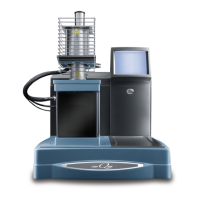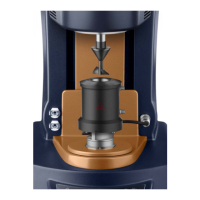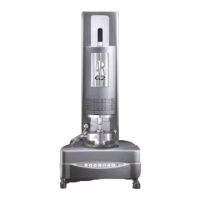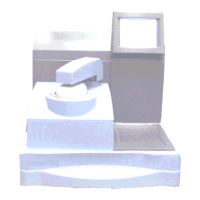TA I
NSTRUMENTS
TGA 2950 B–17
Hi-Res
TM
Option
Comparing the results of the two constant
heating rate scans to the Hi-Res
TM
scans in
Figures B.3, B.4 and B.5 we can see that the
resolution 3.0 scan (Figure B.3) gave compa-
rable results in two thirds the time of the 20
°
C/
minute scan. The resolution 4.0 scan (Figure
B.4) gives much improved resolution in about
the same time as the 20
°
C/minute scan, and the
resolution 5.0 scan gives a dramatic improve-
ment in only twice the time.
Figure B.6 shows a plot of the weight percent
derivatives from each of the calcium oxalate
scans overlaid on the same scale. Note how
much taller and narrower the Hi-Res
TM
peaks are
compared to the conventional scans. We can
also clearly see that transition temperature is
reduced by increasing the resolution setting.
This effect is normal because with progressively
higher resolution settings, transitions are con-
strained to lower decomposition rates which can
only be maintained at lower temperatures.
As can be seen in these simple examples, the Hi-
Res
TM
ramp segment is easy to use and provides
significant resolution improvement, in the same
time frame as conventional constant heating rate
TGA. The following section on Advanced Hi-
Res
TM
Techniques contains valuable information
about additional Hi-Res
TM
methods and adjust-
ments which will help you obtain maximum
performance from this powerful analysis tool.

